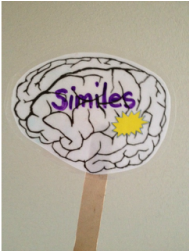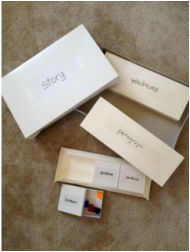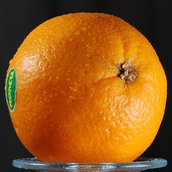
Combine a brain image with a burst image, print, laminate and adhere to a wooden craft stick.
Explain to students that their brains have bursts of electricity when they make connections and think about new ideas.
Then give each student a Brain Burst and ask them to use their dry erase markers to write the concept of the day on the brain. In this example, students were learning about similes.
They kept the Brain Bursts on their desks, and were encouraged to raise it high whenever they heard a simile. During read aloud time there were several, but the teacher also used them in her conversation throughout the day.
Students were paying attention and excited to have the opportunity to share their brain burst with the class.


 RSS Feed
RSS Feed